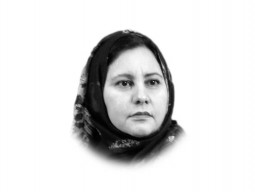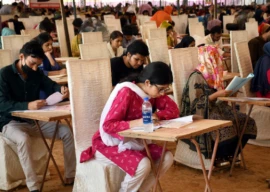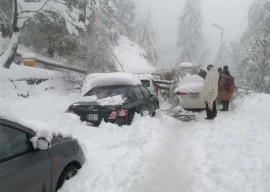
By mid-December 2015, nearly 40 per cent of families displaced due to Operation Zarb-e-Azb had returned to their homes. The repatriation process, supervised by the Fata Disaster Management Authority, the armed forces and government, kicked off in March 2015 — shortly after about 350 areas in Orakzai Agency, South Waziristan, Khyber Agency, Kurram Agency and North Waziristan were de-notified as ‘cleared’ for the return of displaced people. Return of IDPs or TDPs, however, appears to be a formidable challenge; background interaction with officials of various departments looking after the TDPs reveals that the displaced people will not be able to return to their native homes in 2016 due to limited capacity of the civilian administration and the slow pace of damage assessment, acceptance of claims, documentation and release of funds. There are inadequate financial resources for the repair of the damaged infrastructure. Lack of political will to carry out reforms in Fata is another obstacle to a voluntary return to and revival of normal life. Most people want to get rid of the draconian Frontier Crimes Regulations, which relegates them to third-grade citizens.
As far as Afghan refugees are concerned, the UN High Commissioner for Refugees (UNHCR) estimates that there are currently 1.5 million registered Afghan refugees in Pakistan. Their Proof of Registration cards (PoR) issued by NADRA have, meanwhile, been extended to December 31, 2017. Currently, some 32 per cent of the refugees live in 54 camps, while the remaining 68 per cent reside in urban areas. A UNHCR research in 2010-11 found that out of the legal Afghan refugees, 23 per cent are economically active. Since 2002, the UNHCR has facilitated the voluntary return of almost four million refugees to Afghanistan. Despite all the good work by the UNHCR and the government, Afghan refugees have to endure strict scrutiny of their credentials, and snap-checks by the police and paramilitary forces following a terrorist or criminal incident.
No long-term solution is in sight for the nearly 60 per cent of the registered refugees under the age of 24; citizenship for this generation and permanent residence to those who grew up or are socially or economically assimilated here, would mitigate security concerns and ease up their lives.
The work on the ground for the return of refugees and IDPs does not betray the sense of urgency reflected in the NAP. The government keeps reiterating that it is working for the “honourable return of Afghan refugees to their homeland”, but does not offer any durable solution for the Afghans born and raised here. It could have followed the examples of several other countries where the ‘naturalisation’ of immigrants constitutes a core human rights principle. Operation Zarb-e-Azb has established the state’s writ in most parts of Fata and created space for its political reform and integration. The government must now move parliament for substantive Fata reforms. The return of IDPs to their homes depends on whether these areas can be mainstreamed to pave the way for the extension of normal governance structures and fundamental rights. None of these is visible right now and the absence of long-term solutions fails to reflect the urgency that the NAP had expressed on these two challenging issues that beg for innovative and humane solutions rather than mere administrative interventions.
Published in The Express Tribune, December 30th, 2015.
Like Opinion & Editorial on Facebook, follow @ETOpEd on Twitter to receive all updates on all our daily pieces.



















COMMENTS (4)
Comments are moderated and generally will be posted if they are on-topic and not abusive.
For more information, please see our Comments FAQ